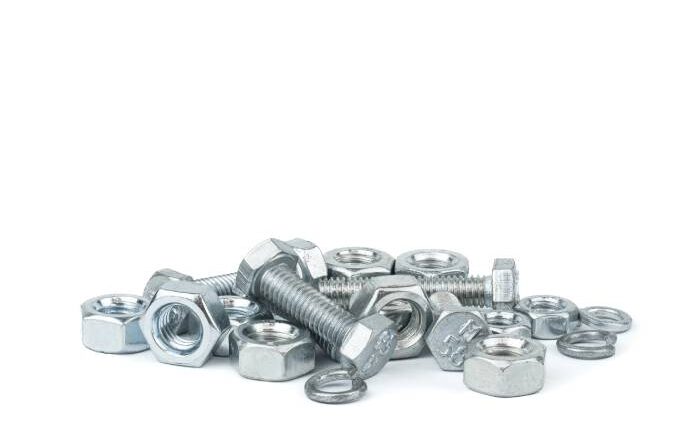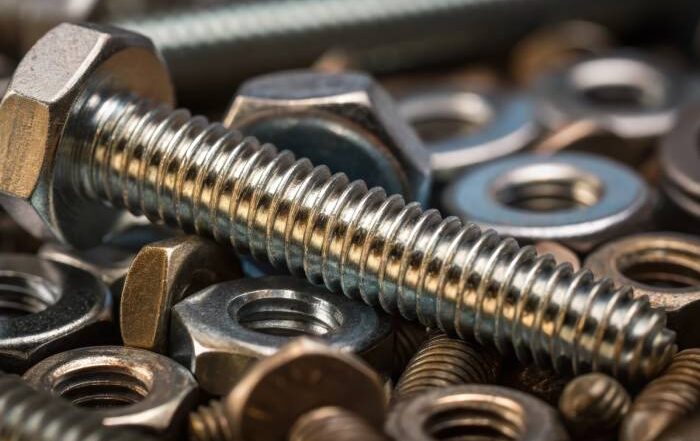
Not to be confused with tubercles, the large bumps whales have for improved hydrodynamic performance, turnbuckles are all around you!
A mere two miles down W Indiantown Rd from Marsh Fasteners, you will find them in a local boxing club. Three miles in another direction, and turnbuckles abound at Admiral’s Cove Marina. Heading further south on Interstate 95, turnbuckles can be found in highway guardrails. Arriving at Palm Beach International Airport, you will find them regulating the tension in aircraft cables and wires.
In other words, turnbuckles are a simple, but important component of all tension-related applications.
What Are Turnbuckles?
Whenever you need to gradually adjust the slack within a tensioning assembly, these handy rigging devices will be used. Also known as bottlescrews, the threaded metal couplings are used to connect and increase or decrease the length of ropes, tie rods, cable lines, and so on.
As with other fasteners, turnbuckles come in different variations in length, size, type, and configuration – each suitable for specific uses. There are three parts that make up a typical turnbuckle:
- One rectangular body that has holes on either end – one side with right hand internal threads and the other with left hand internal threads.
Body sizes range in length from about two inches to over 12 inches. However, turnbuckles are measured by the length of their “window”, or take-up inside the body, rather than their entire length. - Two threaded inserts, or end fittings, that have either a hook, a clevis jaw, or an eye at the non-threaded side. A hook end fitting is self-explanatory, while an eye end fitting is a closed hook. The opening of a jaw end fitting is secured by a bolt, nut and/or pin system.
The thread diameter is an indication of the size, and therefore load-bearing capacity, of the threaded part of the inserts.
Instances where turnbuckles are used dictate that they must be able to withstand high forces without breaking. For that reason, most turnbuckles are made of galvanized or stainless steel. The type you choose will be determined by the factors that are most important to your assembly:
- Galvanized steel turnbuckles are the cheaper of the two materials. Although they can be used outdoors, they are not nearly as corrosion resistant as their stainless steel counterparts.
- Stainless steel turnbuckles are extremely resistant to rust and other forms of corrosion. This higher level of corrosion protection makes them a superior choice for outdoor applications and high moisture, high chloride, and saltwater environments. Bear in mind that demanding marine and coastal conditions require high-quality 316 grade stainless steel for safe and prolonged use.
How Do Turnbuckles Work?
Because the threads of the holes on the body go in opposite directions, the inserts also move in opposite directions so that:
- When the end fittings are screwed in and the body is rotated in one direction, the inserts are both pushed out of the body, extending to relieve tension on whatever section of rope or cable they’re attached to.
- If the body is turned in the opposite direction, the inserts are pulled toward the center, retracting to increase tension.
The amount of tension applied depends on how far apart those two nuts are when they are attached (known as “closed”) and what type of material makes up your particular turnbuckle.
Why Are Turnbuckles So Useful?
Because the body of a turnbuckle is rotated to expand and contract its length, the end fittings remain stationary. That is how turnbuckles are designed to make it easy for you to loosen or tighten strapping et. cetera without twisting the tether.
A turnbuckle may be used to adjust the tension in an assembly in extremely fine increments. At the same time, each of the inserts is just less than half the length of the turnbuckle’s body – allowing for an adjustment of almost the full length of the body.
The threading on turnbuckles allows them to be tightened and loosened without the use of tools, making them popular for quick adjustments in the field.
How are Turnbuckles Used?
The installation of any sort of rigging equipment must be correctly done to ensure its safe and effective use, and turnbuckles are no different. As turnbuckles are used to control the amount of tension on a wire or rope, they can be hazardous if used improperly.
Installing
To ensure that all rigging is properly installed, follow these four easy steps to instal a turnbuckle:
- Unscrew the end fittings from the body until they are fully extended to their maximum take-up length.
- Connect the end fittings to the desired fastening point.
A hook is simply connected to a point via a shackle or a quick link, while an eye is connected to a point via a shackle or a thimble. The jaw is unscrewed and the bolt is put through the clevis ears and screwed shut.
- Turn the turnbuckle to draw the ends together until the rope or cable is sufficiently tight.
- Tighten the nuts on the body if you are using them.
Always be cognizant of the working load limits (WLL) when using turnbuckles.
Removing and General Safety
Before removing a turnbuckle connection from a cable or rope, the tension must be entirely released, leaving some slack in the line. Otherwise, the cable or rope may fly around as the tension is suddenly released.
Turnbuckles that have been distorted due to the pressure and tension they’ve been under should not be reshaped using heat, as this will reduce their durability.
Where are Turnbuckles Used?
Turnbuckles act as tensioning devices that enable users to easily adjust the tension within cable lines associated with both mechanical and c applications. As such, they are frequently used in the construction, mining, oil and gas, fishing, and shipping industries.
Turnbuckles, also called tensioning devices, can be found:
- On watercraft to secure cables that run from the vessel to shore.
- In rigging applications where multiple lines must be tensioned simultaneously, like building scaffolding.
- In theater sets where they are used for adjusting the length of a cable or rope while it’s under load, for example, curtain motors.
- As a rigging device for sails, spars, and other loads that require adjustable tension.
- In carpentry, plumbing, and electrical applications where it is necessary to move or align parts precisely.
- In residential construction to bridge a length of space between two posts.
- On playground equipment, where they hold up swings or other recreational equipment.
- In other situations where it is necessary to control the position and length of cables or ropes, such as when building a suspension bridge.
- In athletic applications such as boxing rings and wrestling rings.
In a nutshell, turnbuckles are an important component of virtually any cable or rope-based application!
Who Supplies Top Quality Turnbuckles?
Selecting and using the right device is important to maintaining a safe and effective project. Since 1992 Marsh Fasteners has been helping you choose the right type of turnbuckle for each application, and even decide if you should be using a turnbuckle at all.
Rigging screws, barrel strainers, bottle screws, tensioners, straining screws, or adjusters… call them what you will! But whenever you need 316 grade stainless steel turnbuckles, the experts at Marsh Fasteners will be able to guide your selection and supply top quality products. Contact us today.



